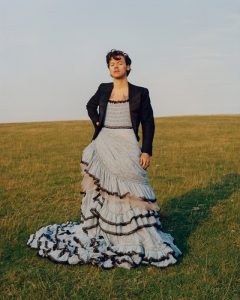S. Bear Bergman’s “Part-Time Fatso” really emphasizes the extreme standards society holds for gendered bodies. The drastic differences felt when strangers would react differently to seeing this person as a man versus a woman reveal the disgusting nature of our culture’s need to fat shame women. But can you really see someone’s health? How do you identify that a person is unhealthy solely based off of their weight? Bodies are meant to support us and carry us, not identify us.
So many people are unhappy with how they look because it does not fit society’s standards. Furthermore, these comparisons to “standards” are photoshopped pictures on social media or of women who are also unhappy and comparing themselves to others, while you compare yourself to them. Women go on diets not because they want to live a better, healthier life but because they feel the need to constrict in order to fit in. In addition, the external pressure, as proven in the reading, shows how distinct and upheld the standard is. How comfortable other people are with dictating or “suggesting” what a woman who does not fit into the mold should eat or not eat or wear or not wear.
From an early age women learn that their looks impact and matter. To be exact, other people’s assessments of their appearance influence the way they are treated on a day to day basis and how these interactions generate their opportunities personally and professionally. Bergman shows how while dressing like a man they run into little to no issues with their appearance, however, as a woman they are slandered and judged persistently. Placing such value on a woman’s physical appearance over their physical and mental health is extremely problematic and takes a toll on all women throughout their life. A woman’s identity should not be valued solely based on physical appearance because they have so much more to offer than that.

